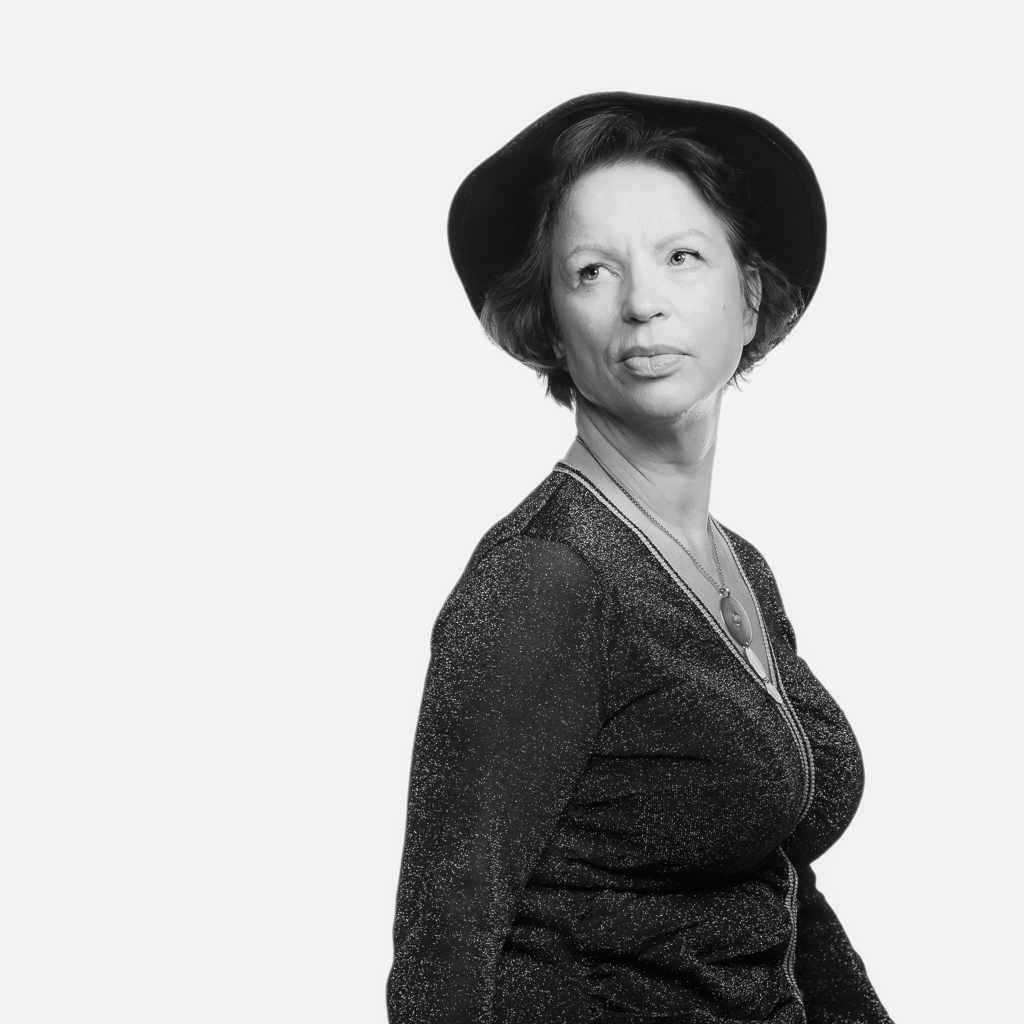To get an answer to that question, I interviewed Finnish nature photographer Kirsi MacKenzie. Since 1993, she has worked as a language teacher with a degree in Swedish, English and Russian philology. In April 2011 she undertook a three-year course in nature photography which led to the Finnish vocational qualification of Nature Photographer. Right from the beginning she decided to specialize in landscapes. Since then her work has been viewed in various exhibitions. She has been awarded in both national and international photo contests such as Nature Photo of the Year/Finland, Kuusamo Nature Photo/Finland, GDT European Wildlife Photographer of the Year, MontPhoto, The Golden Porpoise, Magical Nature, Fine Art Photography Awards, Monochrome Photography Awards, Monovisions Photography Awards and the Nordic Nature Photo Contest.

At the NPOTY contest 2020, one of her pictures was highly commended in the category ‘Black and White’. Time to find out what drove this spontaneous and adventure-loving nature photographer to pursue a very successful second career.
Kirsi grew up in an apartment house in a small city in Finland. Her most memorable childhood experiences in nature were walking on the rocks during summers with her grandfather. She did not really have a passion for nature photography until she was lucky to get a last-minute standby opportunity to travel to the Galapagos Islands with a group of photographers in January 2011. Although she felt like a complete outsider on that trip, wearing a flowery dress and taking pictures free-hand (no tripod) with her first, used a digital camera with one lens, she discovered nature photography and took her first pictures there. During that trip, she heard about a three-year course in nature photography. As luck would have it, Andy Horner, the course’s head teacher, happened to be part of the group. He persuaded her to apply to the program, since he perceived visual talent in her images. Fast-forward to the present where Kirsi is enjoying a second career as a nature photographer, traveling to far-away places she always dreamt of.

Pas-de-deux, Finland, Kirsi MacKenzie
Inspiration
“I have always been interested in art. I live in the center of Helsinki and was inspired by Signe Brander’s photos long before I started photography. She documented the buildings and everyday lives in Helsinki in the early 20th century. I love the way she uses composition and perspective in her pictures. Her visual style is unmistakable.
Among contemporary Finnish photographers, I like Taneli Eskola’s and Tommy Vikar’s poetic and timeless black and white pictures. I developed a taste for monochromatic images by looking at their work. The first time I cried in an exhibition occurred when I saw Ritva Kovalainen’s and Sanni Seppo’s deeply moving ”The Golden Forest”-exhibition. The exhibition led the viewer into the depths of primeval forests and made you reflect on humans’ relationship to the natural environment.
At an early age my father took me to see iconic art movies. I have always been an avid film watcher. To me, nature plays an important role in many films – it can be a character in itself or portray a film character’s state of mind. I often feel that different film scenes come and haunt me while I am at a certain location. When I took last year’s ”Birch Columns” picture, which ended up winning an award, I had a connection with Tarkovski’s visually stunning and poetic movie scenes. The hypnotic atmosphere arises from the labyrinthine rhythm of the bare birch trunks, from which the gaze shifts to a dark background area. Just like in a movie, the camera goes into subjective movement.”

Birch Columns, Finland, Kirsi MacKenzie
Preparation
“Photo trips are a combination of meticulous planning and spontaneity. That being said I have to admit that I am quite a-last-minute person when it comes to packing and planning. I take the bare minimum with me. However, when I am taking pictures I am quite a perfectionist and concentrated.
In 2015, I was approached by Docendo publications to write a book,”the Magical Landscapes of the Nordic Countries”. It was published in 2017. I have invested a considerable amount of time and effort into my exhibitions and the book, traveling to all the Nordic countries: Finland, Sweden, Norway, Iceland, Denmark including Greenland and the Faroe Islands. These photography trips have involved careful planning and developing in-depth familiarity with the various photography locations.
During my own trips, I am more of an improvisor and a risk-taker. I love surprises, all my favourite pictures have an element of reacting to the landscape. My husband is a jazz musician and maybe we share something in common about our approach – a certain intuitiveness, being in the moment.

Illusion, Norway, Kirsi MacKenzie
I practice my visual eye often so that I choose a totally random location for a day-trip and I set a goal for myself to just take one picture during the whole trip. I am aware that you can even be trapped in your own style.
Mostly, I just gain personal joy when I am out taking pictures. We have fantastic nature spots in Helsinki, my absolute favourite is Vartiosaari, a unique island where time has seemingly stood still. I have been part of the ”Save Vartiosaari”-movement with my photos. In these times of rampant destruction of nature we more than ever need people who are strongly emotionally attached to special places: in Finland, some of these are primeval forests and pristine landscapes.”

Shibui, Finland, Kirsi MacKenzie
Signature
“What makes your photography special is your own personal style. Learning the photography techniques is relatively easy; finding a philosophy of photography must be done on your own. Poetry can sometimes be more important than facts to transmit messages.
During my studies, I always tried to escape from the group, walk my own path and find my own images and compositions. I can be inspired by other photographers, but always avoid imitating them. I want my photos to portray my own perspective, associations, visions and dreams.
I have found my own photographic style while working with the different visual elements: form, color, movement and lines. An interesting and inviting composition makes a good image. In my landscape images, I am drawn to nature’s fascinating forms. I have always trusted my intuition. As in music, I feel that a ’first take’ idea is often the best, since it comes spontaneously in a moment from somewhere deep.
Creative association plays a large role in my photography and when an image manages to portray a story, I feel it becomes even more powerful.”

Smooth Shapes, Finland, Kirsi MacKenzie
Ambition
“I came to nature photography as an outsider and the first question I was faced with was what my goal would be. As I work full-time as a language teacher, I don’t have so much time to dedicate to my photography projects. My life is very hectic. I am a highly sensitive person and overwhelmed by intense stimuli. Our world is getting louder and more complicated. So I seek to find tranquility in photography. I try to capture the essential and stillness in my photos. Simplicity and tranquility create a Zen-like mood. The absence of color allows concentration on lines and forms without any distracting elements. I want to leave room for imagination.”

Dreamscape, Sweden, Kirsi MacKenzie
Photography contest
“I started participating in photo competitions right away as a beginner. I sent an image from the Finnish Museum of Natural History which I had taken in 2011 to Nature Photo of the Year Contest in Finland and it received an honorary mention. During my studies, I was nervous if I would be able to graduate since I felt I didn’t have enough experience. I thought that having some success in contests might help give me some credibility. I sent my landscape images to some international contests for the first time in 2013. When I got an honorary mention in GDT – European Wildlife Photograhy of the year in 2014 I travelled to the gala with my husband. It was an unreal feeling to be among the selected winners with established professional photographers. I thought it would be a once-in-a-lifetime experience. Then a few years later, I got another honorary mention in the same contest. I have now won several awards in both national and international nature photo competitions. The success in contests has helped me to get a lot of opportunities. I feel very inspired when seeing other great photographers’ work in contests and learn a lot about them and nature. At the same time, I often still feel a little out of place among the many dedicated ”real” professional photographers. Nevertheless, being competitive as I am, I entered for the 2021 edition of Nature Photographer Of The Year.
To those who still have mixed feelings about entering a photography contest, I would say that participating in contests gives you valuable feedback and recognition. Trust your intuition and judgement, follow your own path and be creative. Don’t work with a blueprint, react to what’s happening, be spontaneous, adapt, take risks and improvise. It’s all about being in the moment. Combine your other interests with photography. I love the feeling when I truly get lost in the flow and can capture some magic.”

Finnish Museum of Natural History, Finland, Kirsi MacKenzie
Social Media
“Since I organize photo courses and workshops, it’s important for me to be active in Facebook and Instagram. I like sharing my photos and getting feedback from other photographers. At the same time I am aware of the fact that there is a narcissistic element to all social media platforms and you become easily addicted to it. Most of all you need to be your own critic when you want to develop as a photographer. I try to have balance and post moderately, I don’t have a huge amount of followers nor is that my goal.”
Popularity and ethics
“Nature photography is becoming more and more popular. But popularity comes at a price. In my experience, most workshops and photo trips nowadays are very expensive and therefore only accessible to wealthy customers with professional gear. Wouldn’t it be great if workshops and photo trips could become more accessible to many people who don’t have the resources but are interested in the magic of photography? Who knows how many talents would be discovered.
The downside of all the sharing on social media and participation in photography contests is that it makes some people do anything to shoot a winning picture. So it becomes more about ego than it is about sharing. They seem to forget about ethics, disturbing animals to capture THE best shot. Sometimes I ask myself questions about the way the winning photos were taken. In my opinion, there should be more attention paid to ethical aspects. It could be made a condition for participation in photography contests, which will be looked at thoroughly by a jury.”

Pterosaur, Norway, Kirsi MacKenzie
Covid-19 effects
“During the Covid-19 pandemic, my university mostly switched to distance learning and I felt that I had to work harder than ever creating online language courses and exams. My photography courses and workshops were cancelled. However, I turned my focus to landscape photography in Finland and have found lots of beauty and magic closer to home.”
At the end of the interview I asked Kirsi the following question: “if you could ask another nature photographer one question, who would that be and which question would you ask?
Kirsi answered: “A lot of photographers have branded and marketed themselves, but the Finnish photographer Tommy Vikars enjoys more being in the shadows just like his subjects that he photographs at night. I see true artistry in his nature photos. I would ask Tommy: ”What inspires you as a photographer?”.

Refuge, The Faroe Islands, Denmark, Kirsi MacKenzie












